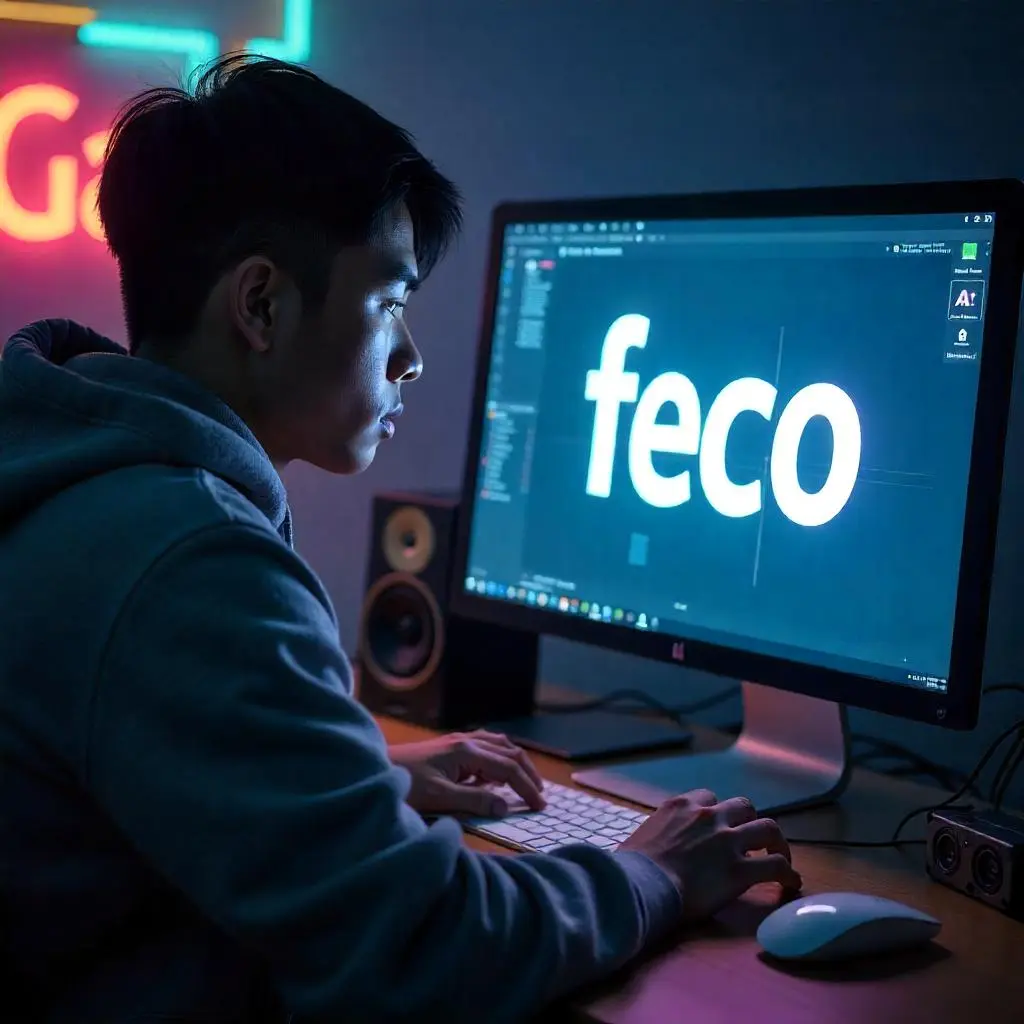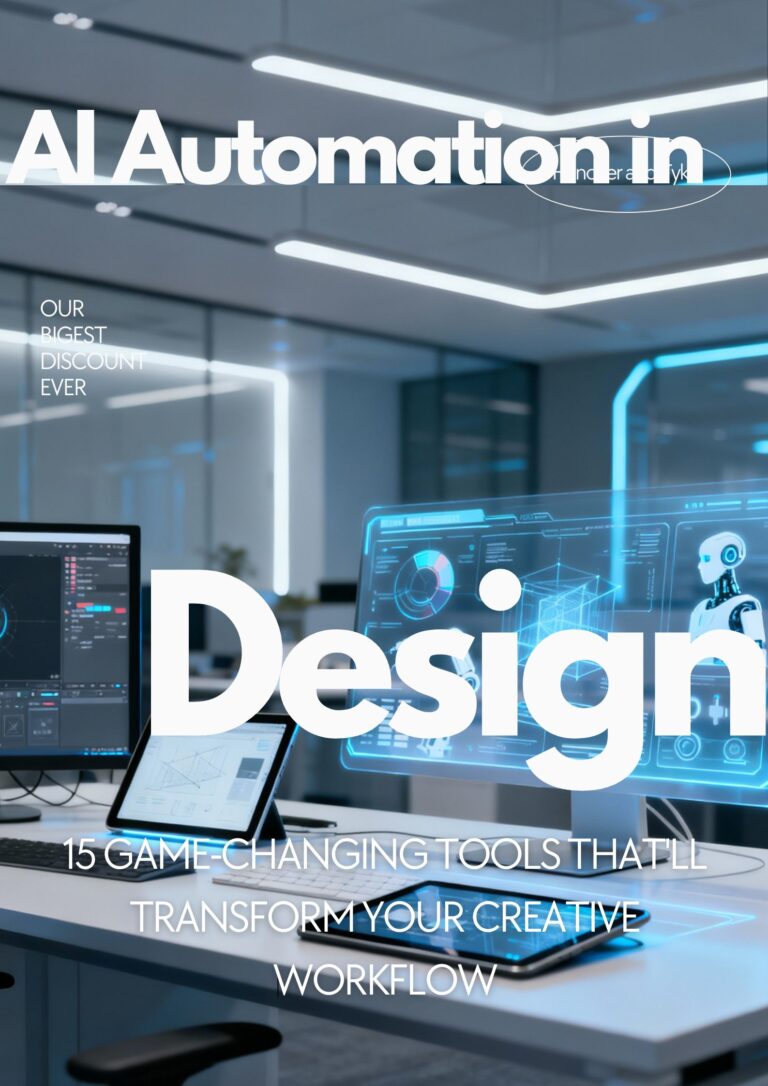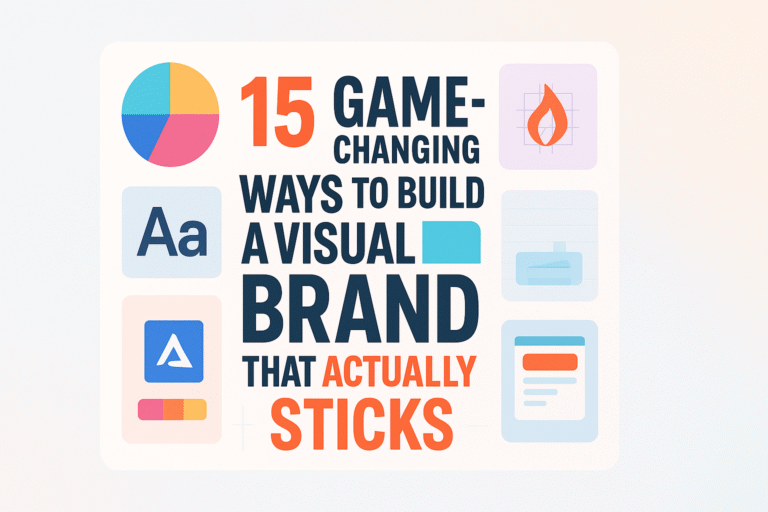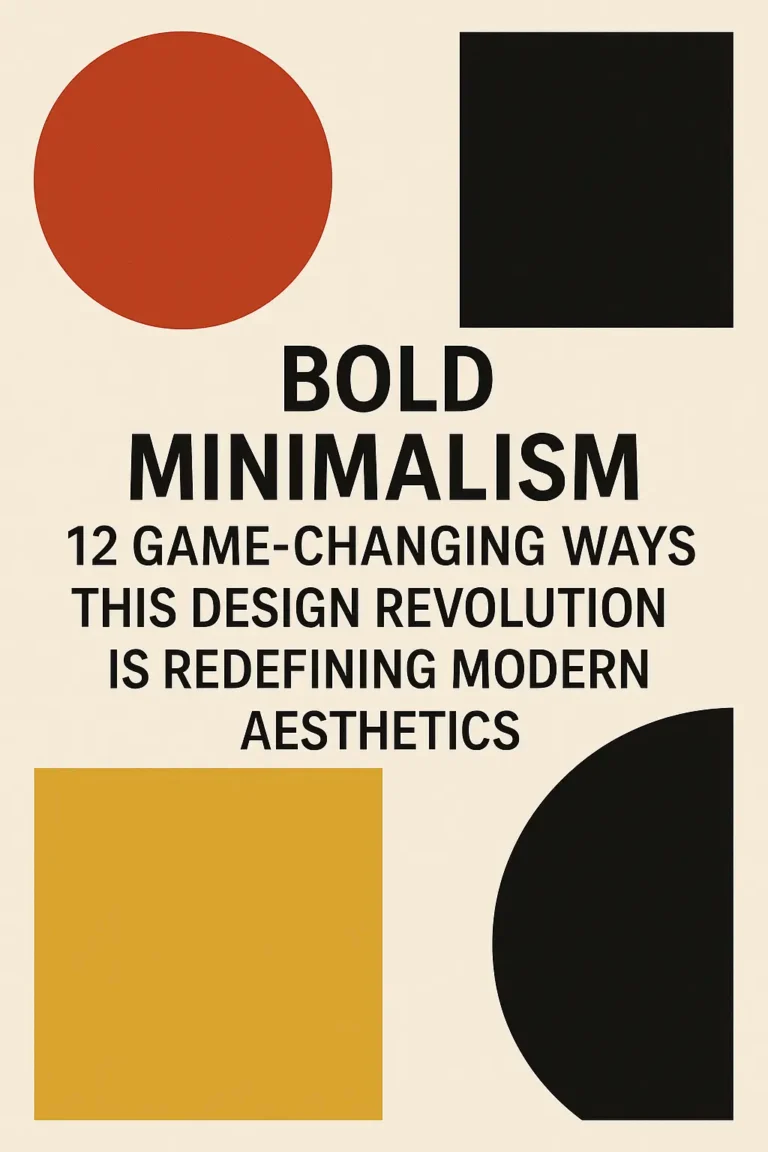
Logo Design Services
In today’s visually-driven marketplace, your logo isn’t just a pretty symbol—it’s the face of your brand. When potential customers encounter your business for the first time, that little emblem speaks volumes before they read a single word about what you offer. I’ve seen countless businesses transform their market presence with the right logo, and others struggle unnecessarily with designs that missed the mark.
From the iconic simplicity of Apple’s bitten fruit to the hidden arrow in FedEx’s typography, powerful logos create instant recognition and build trust. But how do you get there? Whether you’re launching a new venture or refreshing an outdated image, navigating the world of logo design services can feel overwhelming.
In this guide, I’ll walk you through everything you need to know about logo design services—from understanding costs and timeframes to selecting the perfect designer for your unique needs. Let’s dive into the art and science of creating a visual identity that makes your brand unforgettable.
1. Understanding the True Value of a Professional Logo
Before diving into service options, let’s address the elephant in the room: why invest in professional logo design at all?
Your logo isn’t just decoration—it’s a strategic business asset. Consider these benefits:
- Instant brand recognition: A distinctive logo helps customers spot your business among competitors
- Professional credibility: Quality design signals reliability and expertise
- Emotional connection: Well-crafted visuals evoke specific feelings about your brand
- Consistency across platforms: A proper logo package works everywhere from business cards to billboards
- Memorability factor: Unique designs stick in customers’ minds long after their first encounter
I remember working with a local coffee shop that operated for years with a generic, template-based logo. Within months of unveiling their new custom design—a clever illustration incorporating their unique brewing method—their social media engagement tripled and walk-in customers frequently mentioned seeing their distinctive signage from blocks away.
2. Types of Logo Design Services Available
Not all logo design services are created equal. Let’s explore your options:
Custom Logo Design Agencies
These established design firms offer comprehensive branding services with dedicated teams handling your project.
Pros:
- Extensive experience and resources
- Multiple designers contributing ideas
- Full branding package options
- Structured design process
Cons:
- Higher price points
- Sometimes less flexibility for smaller projects
Freelance Logo Designers
Individual designers offer more personalized service and direct communication.
Pros:
- Often more affordable than agencies
- Direct relationship with your designer
- Flexible processes and timelines
- Unique artistic perspectives
Cons:
- Limited availability
- Varying levels of experience
- Potential reliability concerns
Online Logo Design Platforms
Web-based services connecting you with multiple designers or offering DIY tools.
Pros:
- Wide range of price points
- Quick turnaround options
- Multiple design concepts
- Convenient online process
Cons:
- Sometimes less personalized attention
- Varying quality standards
- Limited revisions on basic packages
DIY Logo Makers
Template-based tools allowing you to create your own logo without design skills.
Pros:
- Most affordable option
- Immediate results
- Complete control over the process
- No designer coordination needed
Cons:
- Limited originality
- Basic design capabilities
- Potential technical limitations
- No professional guidance
3. How Much Does Logo Design Really Cost?
One of the most common questions I hear is about pricing. Logo design services span an enormous range, from free tools to five-figure agency projects. Here’s what to expect at different price points:
Budget Options ($0-$200)
- DIY logo makers with templates
- Basic freelance packages with limited revisions
- Some contest-based platforms with fewer participants
- Limited file formats and usage rights
Mid-Range Options ($200-$800)
- Experienced freelance designers
- Higher-tier packages on design platforms
- Multiple concepts and revision rounds
- Complete file format packages
- Basic brand guidelines
Premium Options ($800-$5,000+)
- Established design agencies
- Senior designers with industry expertise
- Comprehensive brand identity packages
- Extensive research and strategy
- Full brand guidelines and implementation support
The key is matching your budget to your actual needs. A pre-revenue startup might be perfectly served by a mid-range freelancer, while an established business preparing for major expansion would benefit from agency-level services.
4. Timeline: How Long Does Professional Logo Design Take?
Rushing a logo design is like rushing a first impression—rarely a good idea. Here’s a realistic timeline breakdown:
Quick-Turn Options (1-3 days)
- Template-based logo makers
- Rush service fees on some platforms
- Limited concepts and revisions
- Minimal research or strategy
Standard Process (1-2 weeks)
- Most freelance design projects
- Basic design platform packages
- Multiple concepts with 2-3 revision rounds
- Some audience or market research
Comprehensive Development (3-8 weeks)
- Agency-led branding projects
- Strategic brand development
- Stakeholder interviews and research
- Multiple concept directions
- Extensive refinement phases
- Complete brand guidelines
I once worked with a client who needed a logo « by Friday » for a trade show. We rushed the process and got something usable, but three months later, they initiated a complete redesign because the rushed logo didn’t truly represent their brand values or appeal to their target audience.
Quality logo design requires thoughtful consideration of your business goals, audience preferences, and competitive landscape. The best designers will insist on taking the time to get it right.
5. Essential Deliverables: What Files Should You Receive?
I can’t count how many businesses I’ve met who can’t find their logo files when they need them, or worse—only have a low-resolution JPG from their website header. Professional logo design services should provide these essential formats:
Vector Files
- AI or EPS files (for Adobe Illustrator)
- SVG files (for web use)
- PDF files (for general use)
Raster Files
- High-resolution PNG files with transparent backgrounds
- JPG files in various resolutions
- Specific social media optimized versions
Color Variations
- Full color primary version
- Single-color versions
- Black and white version
- Reversed (white) version for dark backgrounds
Usage Guidelines
- Minimum size specifications
- Clear space requirements
- Do’s and don’ts for logo usage
- Color codes (CMYK, RGB, HEX, Pantone)
Insert image of various logo file formats and their appropriate uses here
6. The Logo Design Process: What to Expect
Understanding the design process helps set realistic expectations and ensures you get the best results:
Discovery Phase
- Questionnaire about your business goals and values
- Competitive analysis
- Target audience research
- Brand positioning discussions
Concept Development
- Sketching and ideation
- Digital concept development
- Internal designer reviews
- Presentation of initial concepts (typically 2-5)
Refinement Phase
- Client feedback collection
- Concept selection and refinement
- Color palette exploration
- Typography selection
- Multiple iteration rounds
Finalization
- Final approval process
- File preparation
- Delivery of all format types
- Usage guidelines documentation
The most successful logo projects involve clients who provide clear, constructive feedback during the refinement phase. Rather than simply saying « I don’t like it, » effective feedback explains why something isn’t working and what feelings or messages you want to convey instead.
7. Custom vs. Template-Based Logo Design: Which is Right for You?
Template-based designs have become increasingly sophisticated, blurring the line between custom and pre-made options. Here’s how to decide which approach fits your needs:
Custom Design Is Best When:
- Unique brand differentiation is critical
- You have specific creative concepts in mind
- Your industry has many similar-looking competitors
- Your business has complex values to communicate
- You need a truly original mark for trademark protection
Template-Based Options Work Well When:
- Budget constraints are significant
- Timeline is extremely tight
- Your business is in early validation stages
- Your needs are relatively straightforward
- You’re comfortable with less uniqueness
I’ve seen template designs work beautifully for early-stage startups testing market fit, while more established businesses almost always benefit from the distinctive edge that custom design provides.
8. Key Elements of Effective Logo Design
What separates memorable logos from forgettable ones? These essential elements:
Simplicity
The most enduring logos use clean, uncluttered designs that remain recognizable even at small sizes or in black and white.
Relevance
Effective logos reflect something meaningful about the brand’s identity, values, or offering—without being overly literal.
Memorability
Distinctive elements, clever visual tricks, or unique treatments help logos stick in viewers’ minds.
Versatility
Great logos work across all potential applications—from tiny favicon to massive billboard.
Timelessness
Trend-chasing designs quickly look dated; the best logos evolve subtly rather than requiring complete overhauls.
Insert image of logos demonstrating these principles here
9. How to Choose the Best Logo Design Service Provider
With countless options available, selecting the right provider can feel overwhelming. Here’s a practical framework:
Define Your Needs
- Project timeline requirements
- Budget parameters
- Industry-specific expertise needed
- Additional branding services required
- Level of direct communication desired
Research Potential Providers
- Review portfolios for style compatibility
- Check client testimonials and reviews
- Assess communication responsiveness
- Clarify their process and deliverables
- Confirm copyright and ownership terms
Ask the Right Questions
- How many initial concepts will you receive?
- How many revision rounds are included?
- What happens if you’re not satisfied?
- Who owns the copyright to the final design?
- What’s their policy on unused concepts?
I always recommend asking potential designers to walk you through the story behind one of their previous logo projects. Their explanation will reveal their strategic thinking process and how they translate business goals into visual solutions.
10. Popular Logo Design Tools and Platforms
If you’re exploring options for your logo creation journey, consider these highly-rated services:
For Custom Professional Design
- 99designs: Run contests with multiple designers or work directly with chosen professionals
- Fiverr: Find freelancers at various price points with transparent packages
- Upwork: Connect with experienced designers through detailed proposals
- Superside: Access premium design teams with subscription-based services
For DIY and Template Options
- Canva: User-friendly platform with customizable templates
- Looka: AI-powered tool creating unique logos based on your preferences
- Tailor Brands: Smart platform combining AI with branding expertise
- DesignEvo: Free online maker with thousands of customizable templates
For Professional Software
- Adobe Illustrator: Industry-standard vector design software for professionals
- Affinity Designer: Powerful alternative with one-time purchase pricing
Remember that platforms like Canva offer convenience but often result in logos that lack uniqueness due to their template-based nature. Balance ease-of-use against your need for originality when selecting tools.
11. Working Successfully with Logo Designers
Having guided many clients through the logo design process, I’ve noticed patterns in the most successful collaborations:
Do:
- Provide clear examples of logos you like and dislike
- Explain why certain elements appeal to you
- Share insights about your target audience
- Allow creative freedom within guidelines
- Give specific, constructive feedback
Don’t:
- Request direct copies of other companies’ logos
- Make decisions based solely on personal preference
- Involve too many decision-makers without clear structure
- Change direction repeatedly during the process
- Rush the refinement phase
The most effective client-designer relationships combine your intimate knowledge of your business with the designer’s visual expertise. Trust their professional guidance while ensuring they truly understand your brand’s essence.
12. Beyond the Logo: Additional Branding Services
A great logo is just the beginning of your visual identity. Consider these complementary services for a comprehensive brand presence:
Brand Guidelines
Detailed documentation of all visual elements and usage rules
Business Card Design
Professional extensions of your logo identity for networking
Social Media Assets
Profile images, cover photos, and post templates
Website Design Elements
Headers, favicons, and coordinated web graphics
Marketing Collateral
Brochures, flyers, and presentation templates
Environmental Graphics
Signage, vehicle wraps, and physical location branding
Many design services offer packages that bundle these elements at better value than purchasing separately. If you anticipate needing multiple branded items, ask about comprehensive packages from the start.
13. Revisions and Refinement: Getting to the Perfect Design
The revision process is where good logos become great. Most professional services include multiple revision rounds, but how you navigate this process significantly impacts your results:
Effective Revision Strategies
- Consolidate feedback from stakeholders before sending
- Be specific about what’s working and what isn’t
- Explain the « why » behind requested changes
- Reference examples when clarifying direction
- Focus on business objectives rather than subjective preferences
Common Revision Pitfalls
- Providing vague feedback like « make it pop »
- Requesting contradictory changes
- Introducing new concepts late in the process
- Designing by committee without clear decision structure
- Micromanaging technical details better left to designers
I’ve found that the most productive revision discussions focus on how effectively the design communicates your brand’s key attributes rather than debating minute design details.
14. Case Studies: Successful Logo Design Transformations
Insert image of before/after logo redesigns here
Modern Minimalist Makeover
A regional insurance company replaced their detailed, dated logo with a clean, geometric mark that maintained their core color identity while projecting contemporary reliability.
Results: 27% increase in website inquiries and significantly improved social media engagement metrics.
Strategic Startup Identity
A tech startup invested in professional logo design before their product launch, focusing on conveying innovation and accessibility simultaneously.
Results: Successfully secured second-round funding, with investors specifically mentioning the professional brand identity as a confidence factor.
Evolution Not Revolution
An established family business needed modernization without losing recognition. Their designer maintained their core symbol while refreshing typography and color treatment.
Results: Retained 98% brand recognition among existing customers while significantly improving appeal to younger demographic segments.
15. Common Logo Design Mistakes to Avoid
I’ve seen businesses make these costly errors repeatedly:
Trend Chasing
Following current design fads often leads to logos that quickly look dated. Aim for timeless over trendy.
Complexity Overload
Too many elements, colors, or details create logos that reduce poorly and confuse viewers. Simplicity almost always wins.
Poor Font Choices
Typography matters enormously. Generic, inappropriate, or overused fonts undermine brand perception.
Literal Thinking
The best logos suggest rather than illustrate. A dentist doesn’t need teeth in their logo; a house painter doesn’t need a paint brush.
DIY Without Skills
While templates have improved, truly custom design requires professional expertise. Know when to invest in professional help.
Inadequate Research
Failing to check for similar existing logos can create confusion or even legal issues. Professional designers conduct thorough searches.
Frequently Asked Questions About Logo Design Services
How much does it cost to design a logo?
Logo design costs range from free (using DIY tools) to $10,000+ for comprehensive agency branding. Most small businesses find quality solutions between $300-$1,500 depending on their specific needs.
How long does it take to design a logo?
Timeframes vary from same-day results with templates to 4-8 weeks for strategic brand development. A typical custom logo process with a freelance designer takes 1-2 weeks for optimal results.
What is the importance of a logo for my business?
Your logo serves as the cornerstone of your brand identity, creating recognition, building trust, communicating values, and distinguishing you from competitors. It’s often the first visual element customers associate with your business.
What formats will I receive for the final logo?
Professional services should provide vector files (AI, EPS, SVG), raster files (PNG, JPG) in multiple resolutions, and various color versions (full color, black, white, etc.) suitable for all applications.
Can I request revisions for my logo design?
Yes! Most professional services include multiple revision rounds in their packages. Clarify the number of revision cycles included before starting your project.
What is the difference between custom and template-based logo design?
Custom design creates an original logo specifically for your business, while template-based approaches modify existing designs. Custom work offers uniqueness and targeted strategy but costs more than template options.
How do I choose the best logo design service provider?
Evaluate portfolios for style compatibility, check reviews and testimonials, assess communication quality, clarify deliverables and process, and ensure copyright terms meet your needs.
What are the key elements of an effective logo design?
Successful logos feature simplicity, relevance to your business, memorability, versatility across applications, and timeless design that won’t quickly become outdated.
Can I include my brand colors and tagline in the logo?
Absolutely! Professional designers will incorporate your preferred color palette and can integrate taglines when appropriate, though they may recommend separate versions with and without taglines for different uses.
What additional branding services can be packaged with logo design?
Common add-ons include brand guidelines, business cards, social media assets, website elements, marketing materials, and environmental graphics. Many providers offer package discounts.
Conclusion: Investing in Your Brand’s Foundation
Your logo isn’t just a design—it’s the foundation of your entire brand identity. While budget constraints are real, viewing your logo as a long-term investment rather than a quick expense shifts perspective on its importance.
The businesses I’ve seen thrive typically invest thoughtfully in their visual identity from the beginning or upgrade as soon as resources allow. They understand that in a crowded marketplace, distinct, professional branding creates crucial credibility and recognition.
Whether you choose to work with an agency, freelancer, or online platform, prioritize finding a service that truly understands your business goals and audience. The perfect logo communicates your brand’s essence instantly and becomes more valuable with every customer impression.
Ready to transform your brand’s visual identity? The right logo design service can turn your vision into a powerful business asset that works tirelessly to build recognition, trust, and loyalty for years to come.


